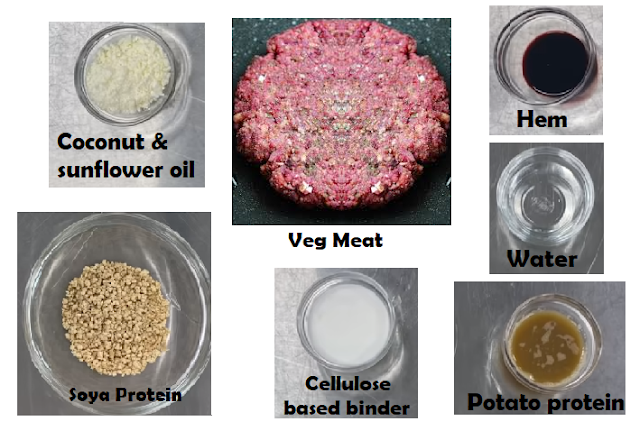According to the estimations till 2019, the Animal meat
industry has a net worth of 1.4
trillion dollars globally. And to fill the demand of the ever-growing population
of the world, every year the forest are been wiped for live-stocks for their
grazing and farming. According to the UN, the cattle industry alone accounts
for nearly 9% of global human-caused emissions, especially considering cows
expel an estimated 160 to 320 liters of methane per day. This results in a
leading source of greenhouse gas emissions and biodiversity loss in the world.
And the solution to this is to reduce the consumption of meat and dairy
products. The environmentalist organization has been trying to reach out to
people & has never come closer to success. This is the reason why, the is
need for finding out a better alternative to meat has come, which not only
would give consumers the foods that they're going to keep wanting & would
also do a better job of delivering it than the current industry does.
Coming to 2020, where it still hasn’t been figured out the
origin of Wuhan Virus or COVID-19 came from Bat meat or something else &
the African Swine Flu-like diseases to animals and the illegal practices on
animals for high profits has raised
safety issues while doing so it also has driven up the price of pork and primed
consumers for its alternatives?
So a new trend has been catching the eyes of the people
finding the answer to the question. Introduced in America 2009, this was first
seen as a regular Veg-Pattie. But doing some research and trial and errors, the
scientist figured out a way to replace meat which could be made from plants.
Later this got the name of Vegan Meat. Vegan Meat has created a lot of buzz
from the meat-loving celebrity, chefs,
and tech community. From the way it smells to the way it looks when it's done
cooking & even the way it looks before you cook it, It tastes actually like
meat, but it's made out of plants. From being in demand this Vegan Meat
industry is gaining its popularity from not just people but also the
businessman. Study shows, 3 out of 5 meat eaters were ready to swap from meat
to plant-based meat if provided it at the same cost. Thus resulting into a big
business opportunity into meat-eating countries. The industries such as Beyond
Meat, Impossible Meat are some of the famous Vegan meat manufacturers who are
capturing masses with their products.

Vegan Meat Before & After Cooking 
Contents of Vegan Meat
As this Vegan Meat is being made
from plants the advantage for a better environment also helps to reduce
greenhouse gases and also deforesting plus saving water required for cattle breeding.
As compared to meat the Vegan Meat contains fewer fats, Cholesterol &
contains high vitamins and minerals but contains more sodium contains than
meat. So it’s not necessarily fully healthy to consume like a salad. However,
the cost is also an issue as the process for making it makes it nearly double
to the cost of meat. But replacing one pound of meat with Vegan Meat can reduce
your greenhouse gas footprint by the equivalent of driving 36 miles in an
average car.
But being made from plants, How do the Vegan meat tastes like traditional meat? The Vegan Meat is usually made primarily out of the water, soy protein, coconut oil, sunflower oil, and Hem. The hem is a protein essential to all living cells, the iron-containing molecule that makes meat red, but is also responsible for the bloody taste of raw meat and the incredibly intense flavor of cooked meat. To produce this heme in massive quantities, the DNA is extracted from soy plants which have an abundance of heme. That DNA is inserted into genetically modified yeast, which is fermented to produce lots of heme.
With Vegan Meat gaining attraction and growing every year, this alternative to meat has sent a clear message that delicious meat doesn’t have to come from the animals anymore. Doing so has also caused the largest meat companies in the world to also launched their plant-based meat products. Thus resulting into a great profitable industry, which would help our world to feed a large population with reduced dependency on farming cattle and lowering Global warming risk.






0 Comments